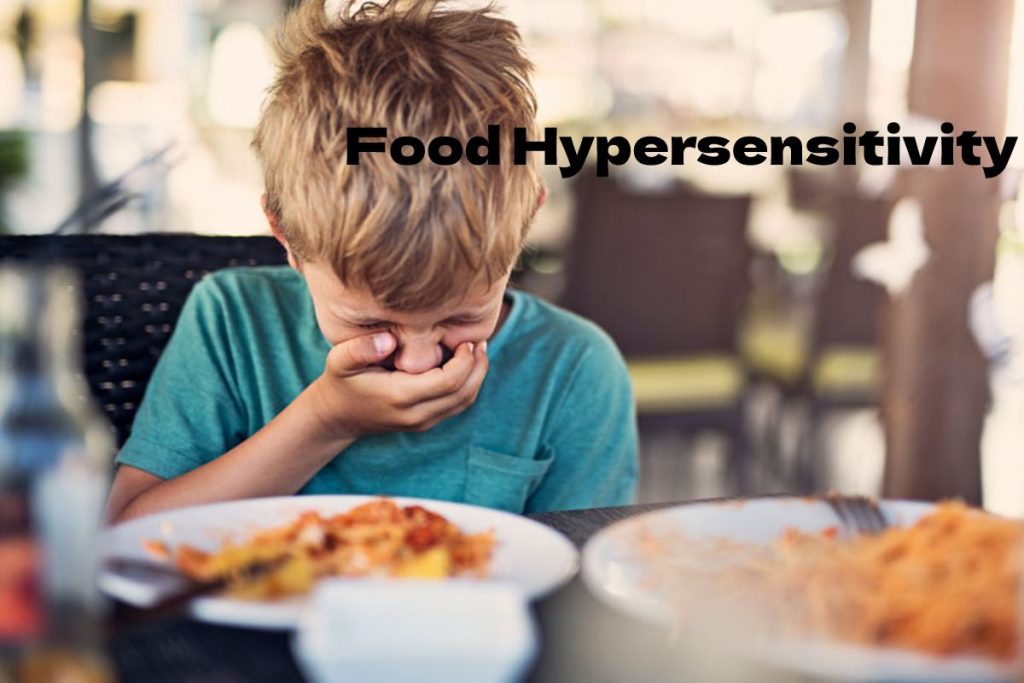Table of Contents
Definition
The prevalence of food hypersensitivity is significantly lower than that of people with allergies to a food species. Many surveys show that at least one person is allergic to a food species in a quarter of families.
Types Of Reactions When Allergic To Food
Unwanted response after exposure to certain foods can be divided into two main categories:
Reaction to allergies caused by abnormal immune system performance
As a result of exposure to allergens, this exposure may lead to immediate effects such as bloating, tumors, trauma, and sometimes chronic pathological phenomena, such as atopic dermatitis.
The reaction to some food does not link to the immune system.
Such as intolerance of a particular substance, the most common of these types is lactose sensitivity, or chemical reactions to certain substances found in food, such as the body’s reaction to caffeine.
Symptoms Of Food Hypersensitivity
The effect of allergies on a person sensitive to a type of food can appear several minutes after eating, or even after several hours, and smell the following allergy symptoms:
1. General Symptoms Of Food Allergies
Each type of allergen has specific symptoms that distinguish it from others, but the most common are:
Local redness.
The appearance of acute urticaria.
Local edema.
Abdominal pain.
Nausea and vomiting.
Diarrhea.
Runny nose.
Itching in the eyes.
Some types of migraines.
2. Acute Symptoms Of Food Allergies
In some critical cases, allergies can lead to a real risk to the life of the owner, leading to the following:
Shortness of breath.
Pressure in the chest.
A feeling of asphyxiation in the throat.
It increased pulse speed.
Vortex.
Loss of consciousness.
Disorders of intestinal absorption of nutrients cause the second type of food allergy, so its symptoms manifest more in diarrhea, abdominal pain, and bloating.
Causes and risk factors of food hypersensitivity
allergies arise following excessive immune system activity when exposed to certain types of molecules. In general allergen proteins, protein stimulates immune system cells to function, resulting in the release of antibodies that provoke other cells and cause them to secrete histamine and other substances.
These substances reach different parts of the body but mainly affect the skin, heart, respiratory tract, digestive system, and blood vessels.
In principle, humans may be sensitive to any food or proteins in them, but the facts indicate that about 90% of food allergies are for the following substances:
Eggs.
Milk.
Wheat.
Soy.
Peanuts.
Hazelnuts.
Fish.
Mollusks.
Risk Factors
Other allergic diseases, such as asthma and scabies of all kinds.
Deficiency or disorder by the action of the enzyme needed to analyze the nutrient that a person is allergic to, for example, in people who do not bear milk, we find a deficiency of lactase, which is responsible for the analysis of lactose sugar accumulation in the intestines.
complications of food hypersensitivity
The unlikely likelihood of certain types of food can lead to some disturbances, such as:
malabsorption of other substances, primarily vitamins, and iron.
Anemia.
diagnosis of food hypersensitivity
the diagnosis of allergies to food types begins with knowledge of clinical merits and physical examination. It is recommended to prepare a daily note detailing eating habits to link the appearance of a symptom to the meals we eat during the diet.
On doctor’s instructions, some types of food should remove from the list for a week or two to examine how this affects the onset of symptoms. Still, the disadvantage of this method is that they are significantly affecting the patient himself and are not objective enough.
Tests Carried Out
The most accurate and objective diagnosis that can be made is made by injecting a sample of the questionable food type under the skin by injection and monitoring the body’s reaction to the process.
In a person who is sensitive to this type of food, swellings and local redness in skin color will immediately appear; this method is also not flawless; even if the result is positive. And also, it does not necessarily mean categorically that the person is allergic to this type of food.
In some cases, measurement of levels of IgE in the blood after exposure to different types of food is used to identify the allergen.
Treatment Of Food Hypersensitivity
Simple case treatment: the patient is given an antihistamine to relieve symptoms.
Treatment of acute conditions: The patient is given an epinephrine injection.


